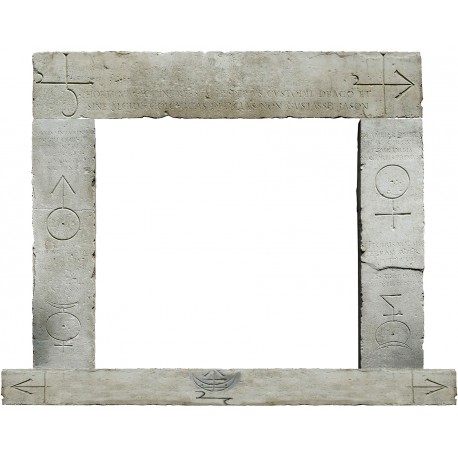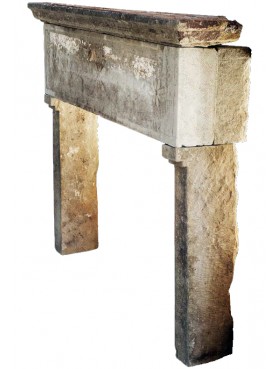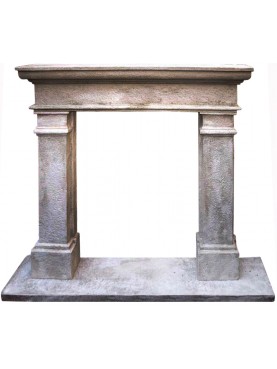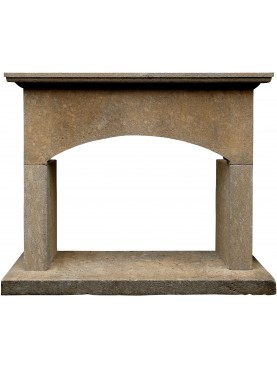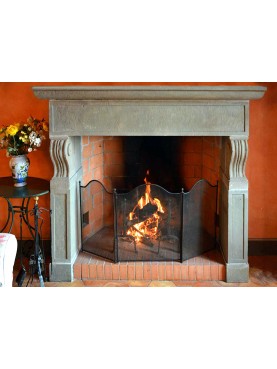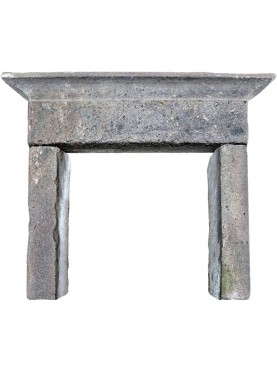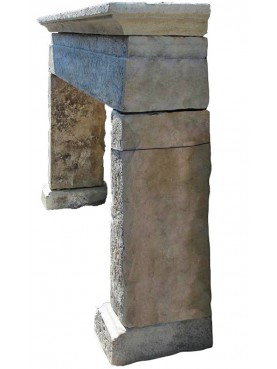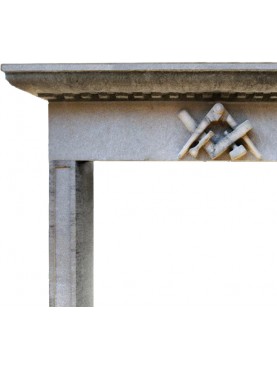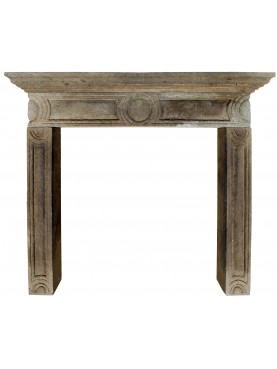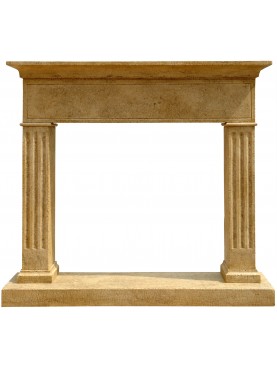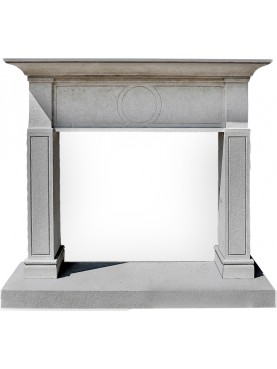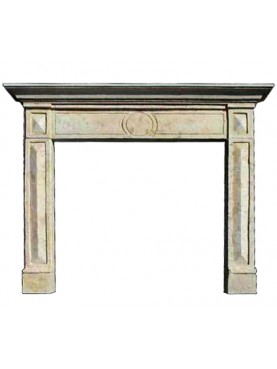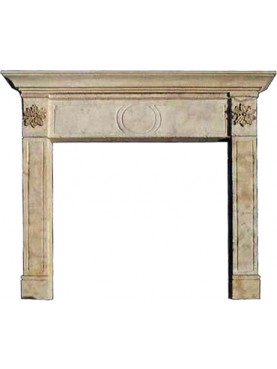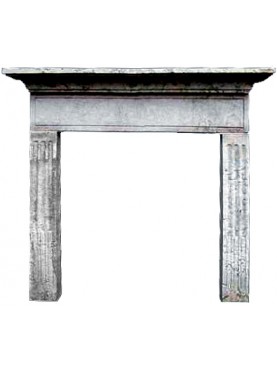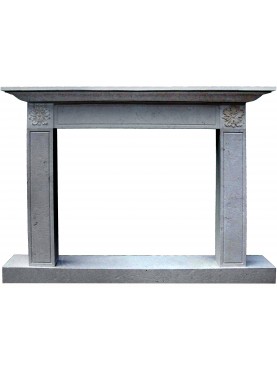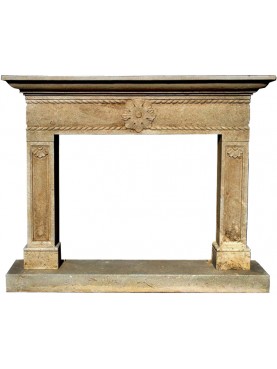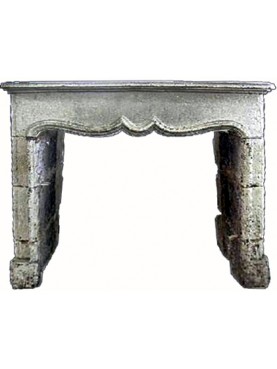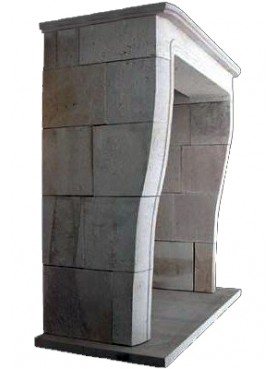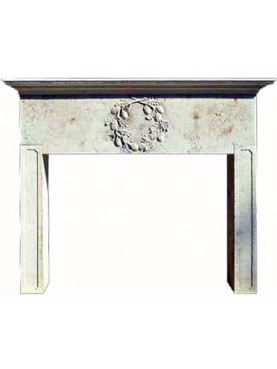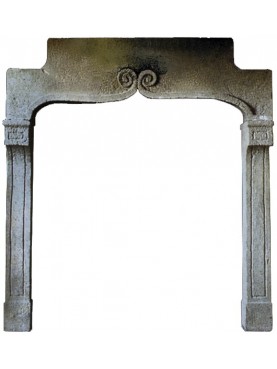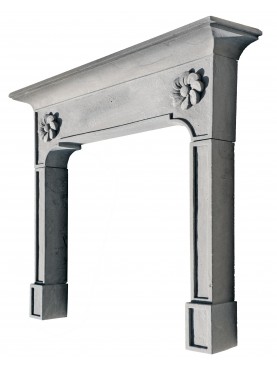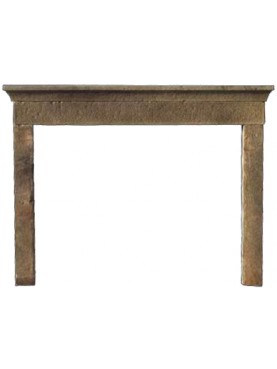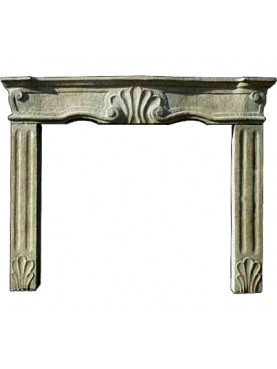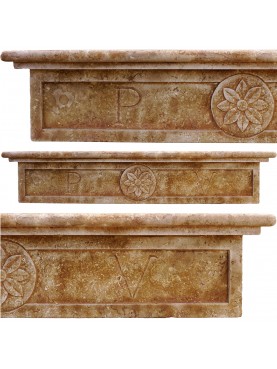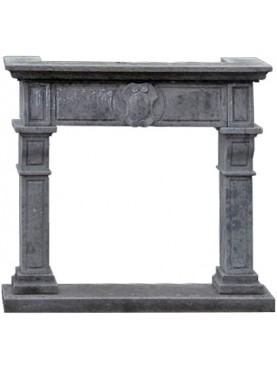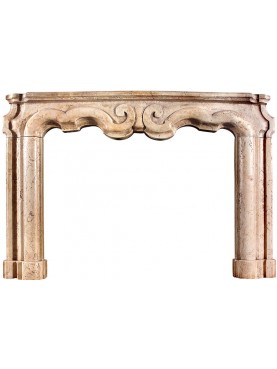Stone Alchemical fireplace inspired by the Hermetic Door
Stone Alchemical fireplace inspired by the Hermetic Door
13368
New
Data sheet
| Height | 45.28 in | 115 cm |
| Max height | 51.18 in | 130 cm |
| Width | 45.67 in | 116 cm |
| Base of the fireplace (Length x Width x Height) | 55.12 in X 11.81 in X 3.94 in | 140 X 30 X 10 cm |
| Fire mouth width X height | 29.92 in X 29.53 in | 76 X 75 cm |
| Maximum width | 55.12 in | 140 cm |
| Manufacturing | Recuperando srl | |
| Material | Pietra Calcarea bianca / White limestone | |
| Note 01 | Optional upper frame 136 X 25 X 10 cm | |
| Note 02 | Width without upper frame 116 cm Width with the upper frame 136 cm | |
| Note 03 | We can reproduce it in any size |
More info
The Alchemic Gate, also called Magic Gate or Hermetic Gate or Gate of Heaven, is a monument built between 1655 and 1681 by Massimiliano Savelli Palombara, marquis of Pietraforte (1614-1685) in his residence, Villa Palombara, located in the eastern countryside of Rome on the Esquiline Hill, more or less in correspondence with today's Piazza Vittorio Emanuele II, in whose gardens it has now been placed.
The Alchemical Door is the only survivor of the five doors of Villa Palombara. On the arch of the lost door on the opposite side there was an inscription which allows it to be dated to 1680; there were also four other lost inscriptions on the walls of the building inside the villa.
The interest of the Marquis Savelli of Palombara in alchemy probably arose from his attendance, since 1656, of the Roman court of Queen Christina of Sweden at Palazzo Riario (today Palazzo Corsini) on the slopes of the Janiculum Hill, today the seat of the Academy National Lincei team. After the queen converted to Catholicism, she abdicated the Swedish throne and spent much of the rest of her life in Rome, from 1655 until her death in 1689.
Christina of Sweden was a passionate lover of alchemy and science (she was taught by Descartes) and she owned an advanced laboratory managed by the alchemist Pietro Antonio Bandiera. An academy was born in Palazzo Riario to which the names of illustrious figures of the seventeenth century are connected such as the esoteric doctor Giuseppe Francesco Borri, from a noble Milanese family, the astronomer Giovanni Cassini, the alchemist Francesco Maria Santinelli, the scholar Athanasius Kircher. The Marquis Palombara dedicated his Rosicrucian poem La Bugia to Christina of Sweden written in 1656, and according to a legend the Alchemic Gate itself was built in 1680 as a celebration of a successful transmutation which took place in the laboratory of Palazzo Riario.
According to legend, transmitted to us in 1802 by the scholar Francesco Girolamo Cancellieri, a pilgrim called stibeum (from the Latin name for antimony) was hosted in the villa for one night. He, identifiable as the alchemist Francesco Giuseppe Borri, spent that night in the gardens of the villa in search of a mysterious herb capable of producing gold. The following morning he was seen disappearing forever through the door, but he left behind some specks of gold, the result of a successful alchemical transmutation, and a mysterious paper full of riddles and magical symbols which must have contained the secret of the philosopher's stone.[ 3]
The Marquis tried in vain to decipher the contents of the manuscript with all its symbols and enigmas, until he decided to make it public by having it engraved on the five doors of Villa Palombara and on the walls of the mansion, in the hope that one day someone would be able to understand them. Perhaps the enigmatic paper could refer, due to historical and geographical concordances, through the passage of hands between some members of the alchemical circle of Villa Palombara, to the mysterious Voynich manuscript, which was part of the collection of alchemical texts belonging to King Rudolf II of Bohemia and donated by Christina of Sweden to her bookseller Isaac Vossius, which ended up in the hands of the erudite Athanasius Kircher, one of Borri's teachers in the Jesuit school.
The symbols engraved on the Alchemical Door can be traced among the illustrations of the books on alchemy and esoteric philosophy that circulated towards the second half of the seventeenth century, and which presumably were in the possession of the Marquis Palombara.
In particular, the frieze on the pediment of the Alchemic Gate, with the two overlapping triangles and the Latin inscriptions, represents a Rosicrucian symbol reported in many seventeenth-century texts and appears perhaps for the first time almost exactly the same on the title page of the allegorical/alchemical book Aureum Seculum Redivivum by Henricus Madatanus (pseudonym of Adrian von Mynsicht, 1603-1638).[6] The same symbol was taken up in other seventeenth-century texts, for example in Michael Maier's Viatorum (Oppenheim, 1618).
It is the seal of David circumscribed by a circle with Latin inscriptions, with the upper tip occupied by a cross connected to an internal circle and the lower tip of the hexagram occupied by an oculus: the alchemical symbol of the Sun and gold.
The triangle with the oculus is very similar to a similar symbol of a pyramid with a pointed tip, which appears on US one-dollar banknotes, among other things accompanied by a Latin inscription Novus Ordo Seclorum which recalls the inscription on the Aureum pediment Seculum Redivivum. The specific pyramid used in the American symbol is taken from the Pyramidographia, a volume published in 1646 in London by John Greaves (1602-1652) after a trip to Egypt, and therefore it is conceivable a common inspiration from the image in this text of both the frontispiece of the book Aureum Seculum Redivivum, as well as the symbol that appears on the US banknote. This symbolism was adopted by the Bavarian Illuminati, who were born about one hundred years after the publication of the esoteric text in Germany in 1677. Both the Illuminati and the symbolism of the one dollar bill fuel a whole current of hypotheses on the conspiracy theory.
The alchemical symbols along the door jambs follow, with some slight differences, the sequence of the planets associated with the corresponding metals:[7] Saturn-lead, Jupiter-tin, Mars-iron, Venus-copper, Moon-silver, Mercury-mercury . This sequence is perhaps taken from the text Commentatio de Pharmaco Catholico published in the Chymica Vannus of 1666. Each planet is associated with a hermetic motto, following the path from bottom to top right, to descend from top to bottom left, according to the direction indicated by the Hebrew motto Ruach Elohim. The door must therefore be read as the monument that marks the historical passage of the overthrow of the symbols of exoteric Christianity towards the new spiritual model that was developing in the seventeenth century.
In the 80s the right jamb (for those looking) was vandalically damaged with the removal of the kabbalistic symbol of Venus. Subsequently a restoration restored it.

